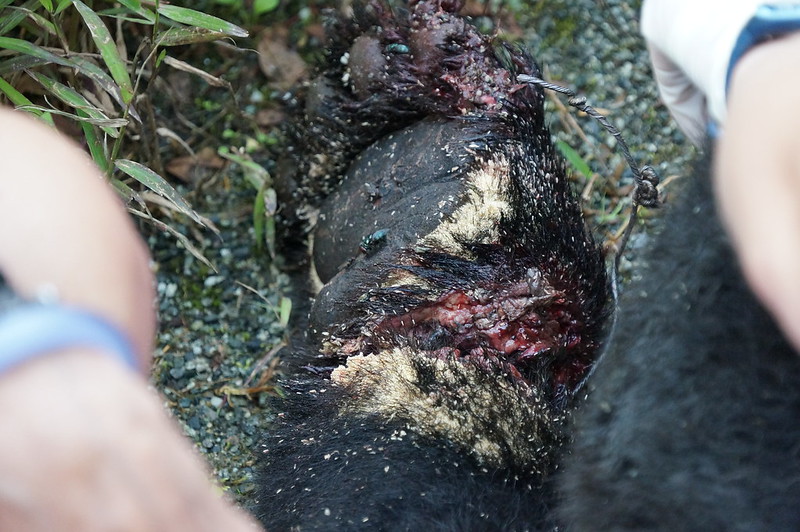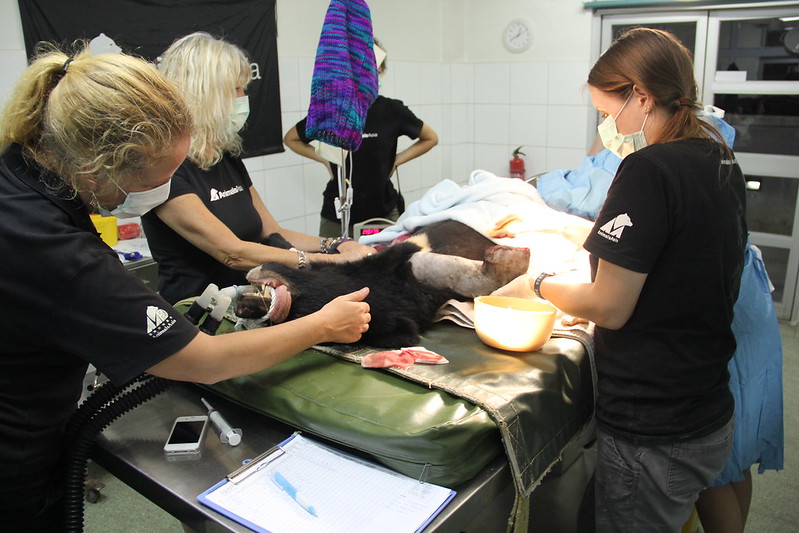Three-legged bear released into the wild spotted alive and well on camera
09 January 2018
One year since moon bear juvenile Rainbow was released into the wild after having an injured limb amputated, she is seen looking healthier than ever.
Just fifteen seconds of grainy footage was all it took to ease fears for rescued moon bear Rainbow.
Having been caught in a snare in the wild in 2016, the juvenile bear was rescued from a protected area in China’s Sichuan province by Animals Asia and taken to our China sanctuary for surgery.
After her infected front right limb had to be amputated, both domestic and global experts were in agreement that Rainbow should be returned to the wild.
But just as she was about to be released, the GPS locator malfunctioned and had to be removed.
Rainbow was released successfully into the mountainous area she had always called home, but without a tracking device her anxious rescuers would have no way of knowing how she would cope with a missing limb.
That changed when a camera trap set up by local rangers caught 15 seconds of footage showing a healthy, three-legged moon bear juvenile foraging in the area.
Animals Asia Founder and CEO, Jill Robinson MBE said:
“The mixture of elation and relief I felt when we saw the footage was almost indescribable. Despite being unanimously advised that release was the best thing for Rainbow, without a tracking device there has always been a nagging doubt as to how she would cope.
“But when we saw the footage, it was instantly clear firstly that this was Rainbow – but also that she had recovered beautifully from the surgery. To see her back out in the wild where she belongs is just a dream come true.”
The forestry officials who found Rainbow believe the snare which caught her was a relic from before the area became a protected reserve. Forestry staff also re-swept the area for traps before Rainbow was released and are active in prosecuting poachers operating in the mountains.

Animals Asia China Bear and Vet Team Director Nic Field, who oversaw the medical operation on Rainbow, said:
“The footage of Rainbow is short but we can clearly see she has recovered well. She is moving naturally with no signs of pain and the limb appears to have healed perfectly. Her coat and body condition indicate she is in good health. This implies she is having no problems adapting to life back in the wild, foraging for food and doing what bears do, despite her disability. For all the team involved in Rainbow’s rescue and rehabilitation, this sighting is a huge relief and very rewarding.”
Despite having rescued more than 600 bears – mostly from the bear bile industry – in Vietnam and China, Rainbow is the only bear Animals Asia has been able to release back into the wild.
Disabilities and disease and a variety of other social factors leave most former bile farm bears vulnerable, or even unable, to cope and survive in the wild.
BACK





